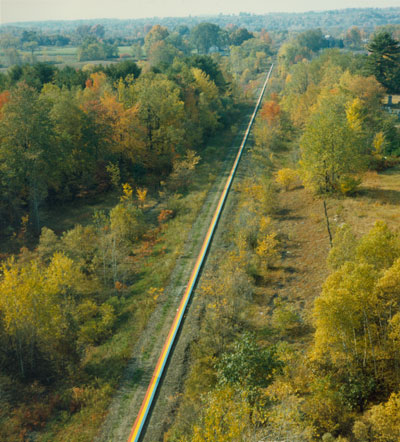
Stephen Long, 1968 © Patricia Johanson
This summer the Museum of Contemporary Art, Los Angeles is giving the land art movement its long-overdue, very first retrospective. Ends of the Earth: Land Art to 1974 looks at a small chunk of land art’s history – barely a decade, from its birth in the sixties to its commercial overhaul in the mid-seventies – and attempts to untangle the messy motivations behind it.
Land art was singularly revolutionary in a period full of revolution. While artists in New York and LA were using deliberately worthless trash as sculpture material or creating works with a silkscreen printer instead of their hands, practitioners of land art literally removed themselves from the art institution. They created work out of raw firmament on sites chosen not only for their workability, but for their remoteness as well. Land art was all natural (pieces were shaped out of the environment, never brought in from somewhere else), unmoving, and purposefully left to the mercy of the elements just like any other organic creation. It was as far from the art machine of galleries, collectors’ auctions, and museums that you could get. Ends of the Earth portrays land art’s origins for what they were: equal parts thought-provoking, exploratory, and reactionary.




 Facebook
Facebook Permalink
Permalink Digg
Digg Reddit
Reddit LinkedIn
LinkedIn StumbleUpon
StumbleUpon Tumblr
Tumblr

